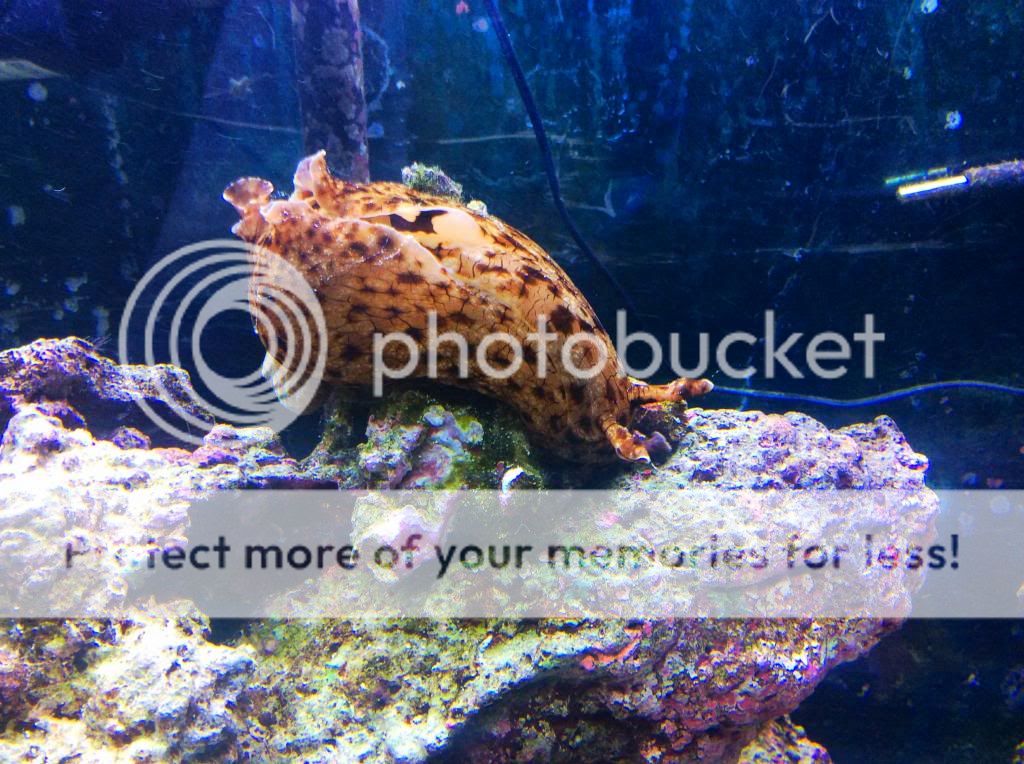Urgh...well that is still more ambiguous than I was hoping for, not pic-wise but animal-wise. There are several I've seen that look very similar to this one, including some A. juliana. Do you see any evidence of it using the back of its foot to sucker onto things?
Unfortunately, if it is A. californica, the temperatures for the range is actually on the cooler side; University of Miami says they should be kept at 55-61F, which is in keeping with what I've heard/read about them in the past. However, as far as I know A. californica is also fairly rare as an accident as far as I know, whereas A. juliana is a fairly common accident.
The urchin could definitely cause irritation if landed on. I doubt the urchin would jab it deliberately, but sea hares have a tendency to climb up glass and fall.
They had one for sale but it really looked nothing like mine. Their's was fuzzier looking and the rhinophores on theirs were just stumps while mine are at least half an inch.
The most commonly sold sea hares are Dolabella auricularia and Bursatella leachii, so what you saw was probably one of those. Aplysia species are usually avoided since they are generally more potent in the ink department. Of course, that said, despite having many D. auricularia that were 100% safe, I found one jet black Dolabella that managed to nuke two tanks worth of fish and sea urchins before I realized that it was the source of the toxicity (still not totally convinced it was D. auricularia as I've never heard or read of a solid black one, but that was the only possible match really). As far as I know, most Aplysia are not that big of a risk, but make sure your skimmer is in tip top shape anyway as a precaution.








